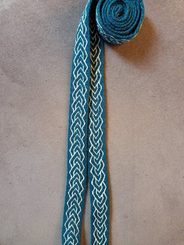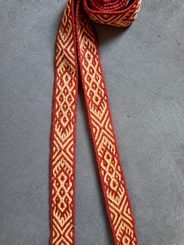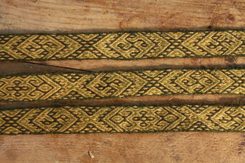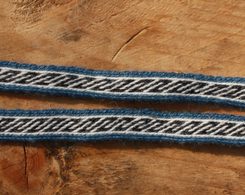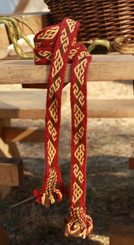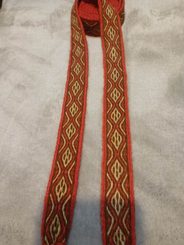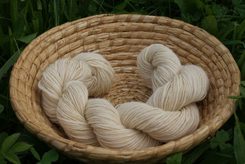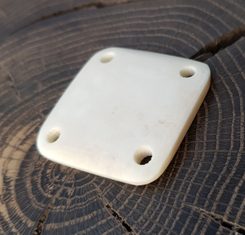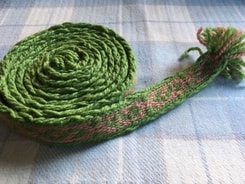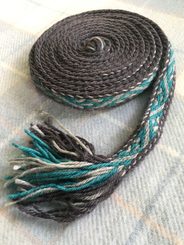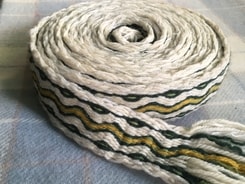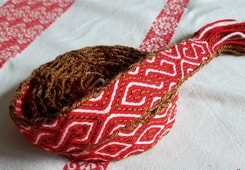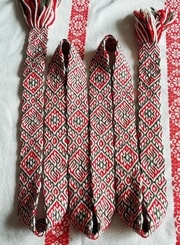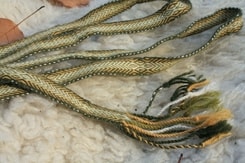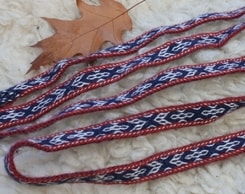-
Produktkatalog
-
- Sale
-
Silber Schmuckstücke
-
Alle in der Kategorie Silber Schmuckstücke
- Anhänger - Schmuck, Silber
- Armbänder
- Ringe
- Ohrringe
- Moldavite
- Halsketten
- Schmuck aus Gold
- Torques, halsketten
- Bernstein, Schmuck
- Silberschmuck-Sets
- Broschen
- Silber und Edelsteinen
-
Thematische Schmuckkollektionen
-
 Alle in der Kategorie Thematische Schmuckkollektionen
Alle in der Kategorie Thematische Schmuckkollektionen
- Lapponia Juwelen
- VIKINGS
- Jugendstil-Juwelen
- Dinosaurier-Shop
- Mythologiesammlung, alte Kulturen
- Nautischer Silberschmuck
- Gepresste Schmudstuecke
- Granatschmuck
- Mystica Silber Kollektion - Anhänger
- Mystica Silber Kollektion - Ohrringe
- Silberne Halskette
- Historischer Schmuck
- Zodiac, silver pendants
- Wikingerschmuck
- Anhänger - Historia
-
-
-
Schmuckstücke
-
Alle in der Kategorie Schmuckstücke
- Amulette, Talismane aus Zinn
- Bronze - Schmuck
- Vergoldeter Schmuck
- Schnüre, Schatullen, Anhänger
- Geschmiedeten Schmuck, torques, bracelet
- Modeschmuck
- Schlüsselanhänger
- Schmuck mit Steinen
- Mittelalterliche Krone
- Historischen Repliken aus Bronze
- Chakra, reiki
- Messing Schmuck, Importe Irland
- Abzeichen
- Clans Abzeichen
- Original celtic jewelry
-
-
Waffen
-
Alle in der Kategorie Waffen
- Sharp Blades - throwing knives
- Schwerter
- Axt, Schlagwaffen
- Dolche
- Messer
- FakeSteel armory
- Streitkolben, Streithämmer
- Langen Messer, Sachse
- Lanzen, Speere
- Bögen
- Damast Messer
- Falchionen und Langmesser
- Swiss army knives
- HMB - Waffen
- Feuerwaffen
- Wikinger Messer
- Hirschfänger
- Pillow Fight Warriors
- Messer - Zubehör, Anspitzer
- Küchenmesser
-
-
Rüstungen
-
T-SHIRTS, Boots - Rock Music
-
Keramik
-
Lederprodukte
-
Hornprodukte
-
Schmiedearbeiten, Mintage
-
Bushcraft, reenactment, handwerk
-
 Numismatik
Numismatik
-
Schuhe, Kleidung
-
Rahmentrommeln
-
Historische Brettspiele
-
Figuren, Dekorationen
-
Wollprodukte
-
 Holzprodukte
Holzprodukte
-
 Wargaming
Wargaming
-
Lizenzierte Produkte - Filme, Spiele
-
Alle in der Kategorie Lizenzierte Produkte - Filme, Spiele
- Warhammer 40K
- 2001 Space Odyssey
- AC/DC
- ALIEN
- Antman
- Assassin's Creed
- Asterix
- Avatar
- Avengers - Infinity War
- Back to the Future
- Batman
- BEETLEJUICE
- Big Bang Theory
- Blade Runner
- Bud Spencer - Terence Hill
- CBGBs
- Clockwork Orange
- Deadpool
- Deep Purple
- E.T. the Extra-Terrestrial
- Frank Zappa
- FULL METAL JACKET
- GAME OF THRONES
- Ghostbusters
- Godfather - Der Pate
- Gremlins
- GUARDIANS OF THE GALAXY
- HAN SOLO MOVIE
- Harry Potter
- IRON MAIDEN
- IT
- Jaws
- James Bond 007
- Jurassic Park
- King Kong
- Knight Rider
- KISS
- LED ZEPPELIN
- LOONEY TUNES
- LORD OF THE RING
- Magic the Gathering
- Marvel
- VIKINGS
- Metallica
- Metro Exodus
- Mortal Kombat
- MR PICKLES
- NASA
- NIRVANA
- Peaky Blinders
- Pearl Jam
- Pink Floyd
- Planet der Affen
- Pokémon
- Predator
- Queen
- Rambo
- RICK AND MORTY
- Robocop
- SPIDERMAN
- STAR WARS
- Suicide Squad
- SUPERMAN
- Teenage Mutant Ninja Turtles
- The Doors
- The Witcher
- Thor Ragnarok
- Vikings
- World of Warcraft
- Rocky
- Terminator
- Die Drachenwache
-
-
 Magik
Magik
-
Bücher, Karten, Autoaufkleber
-
Historische Zelte
-
Skulpture, Garden Decor
-
 Met, Wein
Met, Wein
-
 Moldavite, Mineralien, Fossilien
Moldavite, Mineralien, Fossilien
-
Kosmetik
-
Archäologie, Geologie
-
Interior Design
-
 Weihnachtsdekorationen, Glasperlen
Weihnachtsdekorationen, Glasperlen
-
Aromatherapie
-
FILM und Requisiten
-
Alle in der Kategorie FILM und Requisiten
- Rüstung - Film und LARP, Polyurethan
- FakeSteel armory
- Kostümverleih historische kostüme
- Karnevalskostüme zu vermieten
- Carneval costume accessory
- Kostümverleih - Teile des Kostüms
- Theater Requisiten Verleih
- Mittelalterliche Zelte mieten
- Historisches Kunsthandwerk und Werkzeuge – Vermietung
-
-
 Bushcraft
Bushcraft
- Naav
- Arma Epona
- Großhandel Lose
- geschenkgutscheine
- PREISNACHLASS
-
- Einloggen
- Registrieren
- Grosshandel
- Kontakt
- Land (Deutsch)
- Währung ($ - USD)


Es befinden sich keine Artikel im Warenkorb
- Schuhe, Kleidung
- Dekorative Textilgürtel

Dekorative Textilgürtel
Tablettenweben - Die Technologie des Tablettenwebens zeichnet sich durch ihre außergewöhnlichen Musterungsmöglichkeiten aus, von einfachen Linien und Motiven bis hin zu Buchstaben und komplexen Tier- oder Pflanzenmustern. "Tablette" (oder "Karte" in den USA) ist eine Platte, durch die einzelne Schussfäden gefädelt werden. Am häufigsten trifft man auf quadratische Tabletten mit vier Löchern in allen Ecken, aber es gibt auch solche mit zwei Löchern, dreieckigen, sechseckigen, achteckigen usw. Am häufigsten wird die Webmethode angewendet, bei der jede Tablette um 90° vorwärts oder rückwärts gedreht wird, je nach bestimmtem Muster.
Die Ursprünge des Tablettenwebens sind nicht klar; beispielsweise wird immer noch darüber debattiert, wie die sogenannte "Rameses-Gürtel" hergestellt wurde, der etwa im Jahr 1185 v. Chr. entstand. Der Grund für die geringe Anzahl archäologischer Funde liegt im organischen Ursprung des Garns, aber oft auch der Tabletten selbst (Holz, Leder); es wurden Tabletten aus Knochen, Elfenbein oder Bronze gefunden. Heute ist es am einfachsten, stabiles Papier wie Spielkarten zu verwenden. Mehr Funde wurden aus dem Gebiet des Römischen Reiches, der keltischen Zivilisation (Muster aus Hochdorf), der Wikinger (Muster aus Birka) und der slawischen Zivilisation erhalten. In Bezug auf die heutige Tschechische Republik wurden die ältesten Tabletten (aus dem 9. Jahrhundert) in Staré Město bei Uherské Hradiště gefunden. Eine bedeutende Entwicklung der Technologie erfolgte im Mittelalter, und später blieb sie eine beliebte Handwerkskunst. Außerhalb Europas wurde diese Technik in Afrika und vor allem in ganz Asien verwendet. Mit Tabletten gewebte Gürtel wurden besonders zur Verzierung von Kleidungsstücken verwendet, jedoch zeichnen sich Produkte des Tablettenwebens durch Festigkeit und Widerstandsfähigkeit aus und wurden auch als Riemen, Gürtel usw. verwendet. Der Schuss konnte auch an den Seiten eines Standardwebstuhls zum Weben von Textilien aufgehängt werden, so dass der endgültige Stoff bereits verziert ist (Mantel in Thorsbjerg gefunden). Das für das Weben verwendete Material war hauptsächlich leicht gefärbte Wolle, manchmal mit Seiden-, Gold- oder Silberfäden; seltener wurden Leinenfäden verwendet; Baumwolle wurde später in der Geschichte verwendet.




